Leader Lucy Starling
I had little option but to reschedule within 48 hours of the meeting arranged for Saturday 8 May, because of the very bad weather forecast for the weekend. The alternative was to cancel. The forecast for Friday was excellent, calm and sunny early morning, cloud building with a light westerly breeze and an afternoon of long sunny intervals. Perfect bird listening conditions from 8am until 10.15am! Four members joined me for a prompt start at 8am and a fifth later at 10.45am.
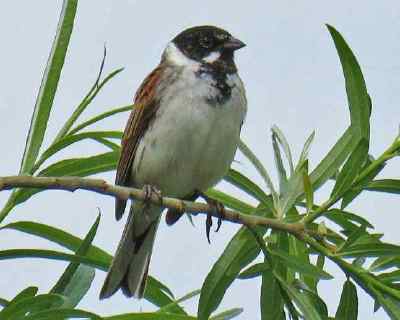
Reed Bunting © Tom Pinckheard
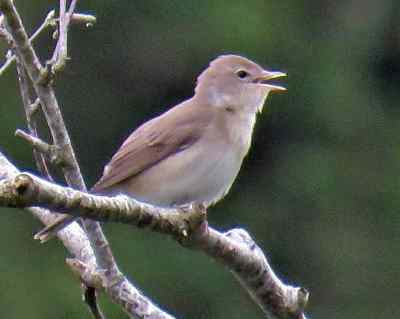
Garden Warbler © Tom Pinckheard
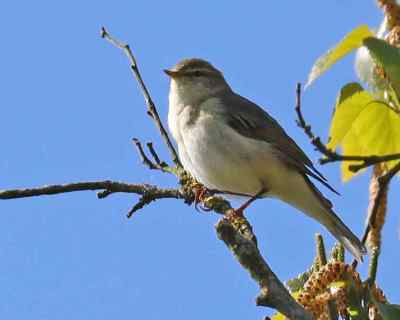
Willow Warbler © Richard Bottle
Firstly, we stood by the pond close to the car park picnic area concentrating on the somewhat monotonous and steady chatter of a Reed Warbler that did include some mimicry of Swallow call and the soft “swee” call of a Reed Bunting. We very much focussed on listening to warblers, in particular, comparing Blackcap with Garden Warbler, and I tried to demonstrate this with using the human voice, to show the rhythm, speed of delivery of notes and overall song length and volume. I describe the Blackcap in my report of 27 April 2021.
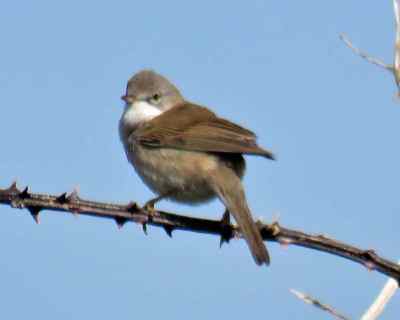
Common Whitethroat © Tom Pinckheard
The Garden Warbler has a more flowing, warbling song, with distinct Blackbird phrases and tones, and the pitch, is lower than that of the Blackcap and the notes are more rapidly delivered. The volume of the song is steady and the song duration is invariably much longer. Having both species singing side by side in same hedgerow was really useful to make these comparisons. How different, the short and very scratchy ditty of the Common Whitethroat, who often sings from the cover of bramble, and will sing in a song-flight. This species is in complete contrast with the soft, descending wistful notes of the Willow Warbler, which we saw very well at the top of a Willow tree and the two-note very familiar song of the Chiffchaff.
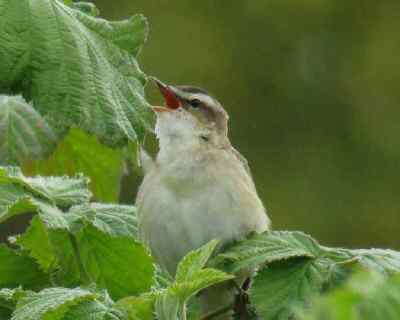
Sedge Warbler © Tom Pinckheard
In the same area around Waltons Loop, we encountered one of my favourite songsters, the Sedge Warbler, full of mimics of Reed Bunting call, Blue Tit song and alarm, Goldfinch and of course the less rich Reed Warbler.
We were never far from a Cetti’s Warbler as we meandered along the old railway line and circumnavigated the grass path around Waltons. The explosive and loud short song, so fulsome and rich, burst forth from cover at regular intervals and we did see one bird very well for a few seconds. And, for a change, we listened to the subtle 6 chirruping notes of the simple song of the Reed Bunting noting the direction of sound and the approximate height and distance, and there he was in his splendid breeding plumage, very typically, singing near the top of a willow on the edge of the reed bed.
Also, at less regular intervals, Bitterns were booming. The disappointment of the day was hearing a male Cuckoo call twice and only for a very short period.
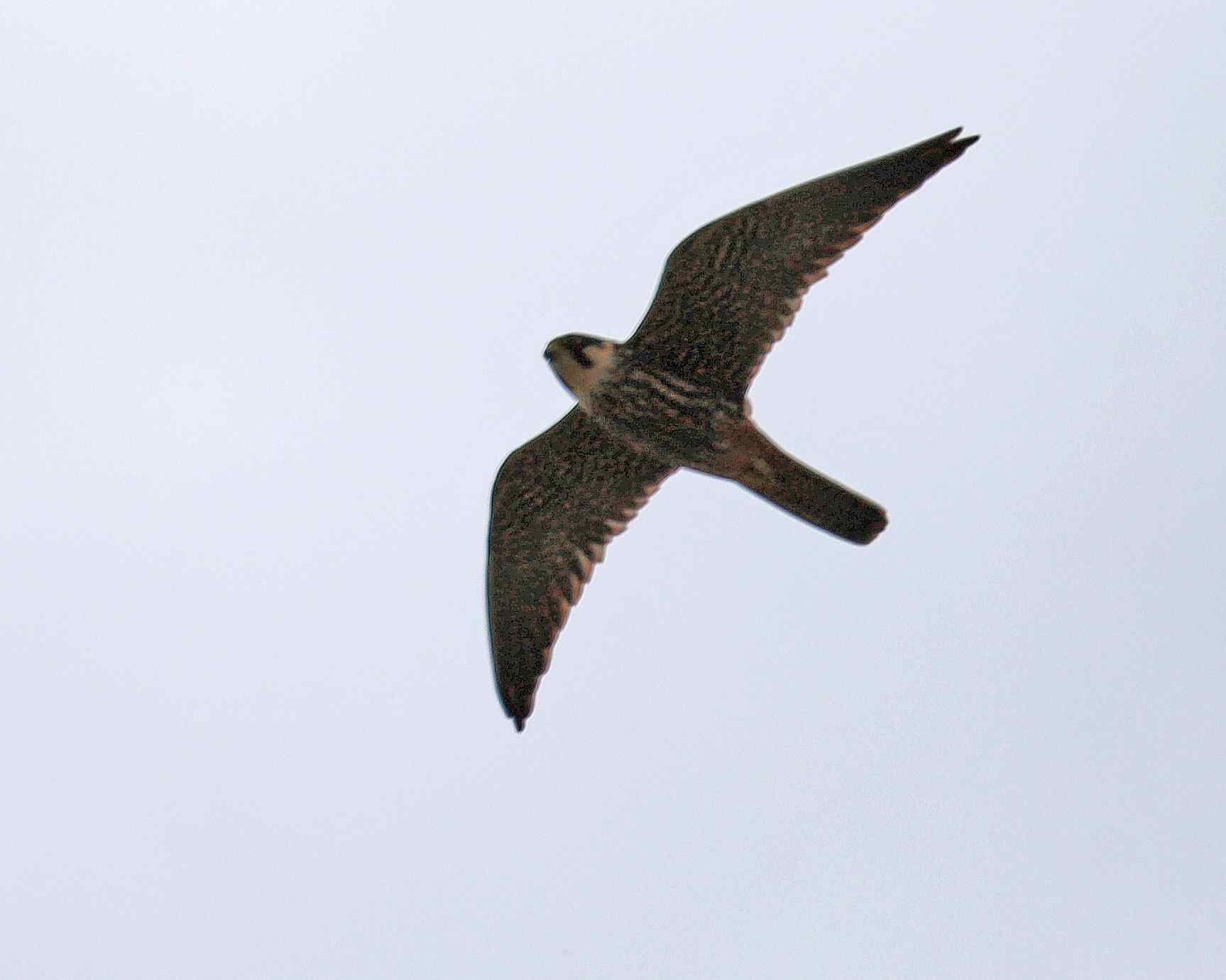
Hobby © Richard Bottle
In terms of bird watching highlights, the species of the day was most certainly the Hobby. We saw around 15 birds during the visit, hawking insects in the sunshine, sometimes quite low over the reeds and the open water.
Watching these, we could pick up Swifts and a few House Martins and Swallows and the occasional female Marsh Harrier came into view. I was amazed to find a Hobby perched up on a dead tree, the bird taking off to catch some prey and eat it and then return to the same tree.
That said, I wonder if bird of the day was the Bittern, for one lucky member, had views of this elusive species for a few seconds on Shapwick Heath towards the end of our meeting! We all had good views of Great White Egrets and Great Crested Grebes with one stripey youngster, among several other species of waterbirds.
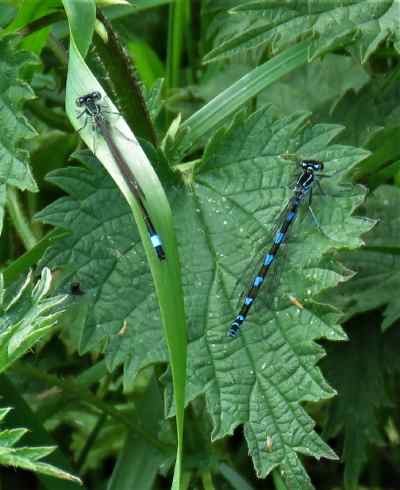
Blue tailed and Variable Damselfly © Tom Pinckheard
Other wildlife we encountered in the very welcome warmer conditions were numerous damselflies, mainly Variable, Blue-Tailed, and a few Large Red. Butterflies were out and about – male Orange Tips, Brimstones and Peacocks, plus a few Green-veined White and Small Tortoiseshell. Indeed, it was encouraging to see lots of insects (bird food) after such a cold and dry April.
Lucy Starling


Recent Comments